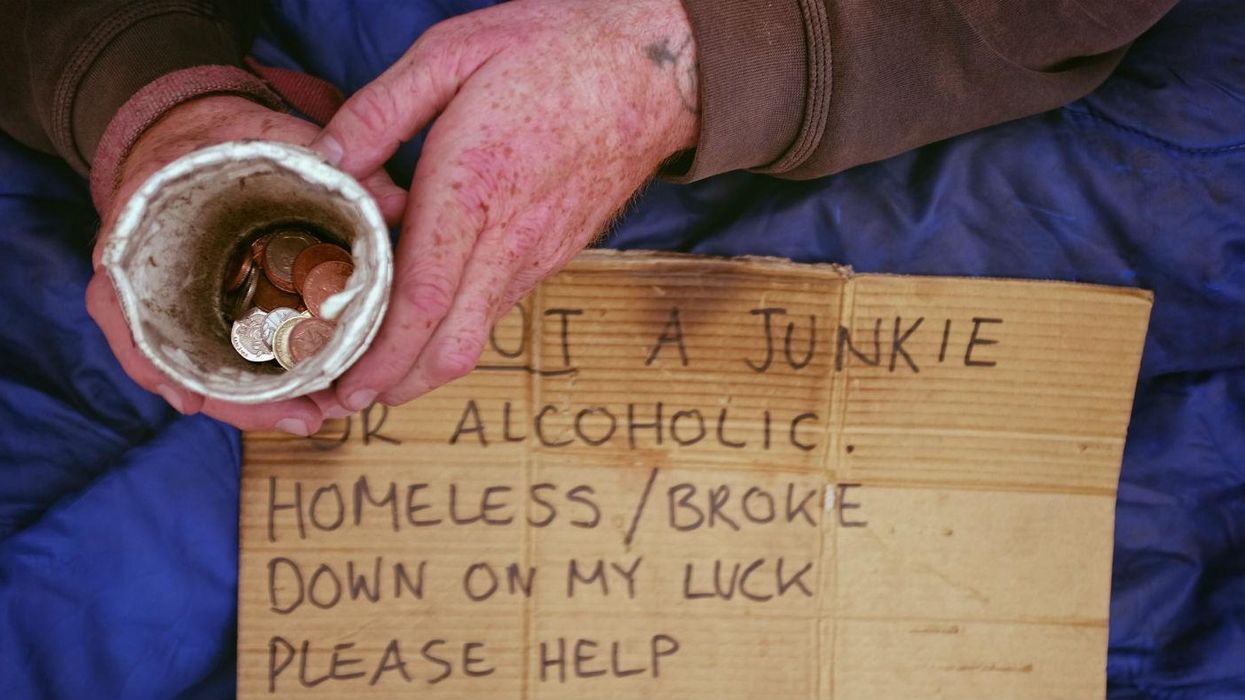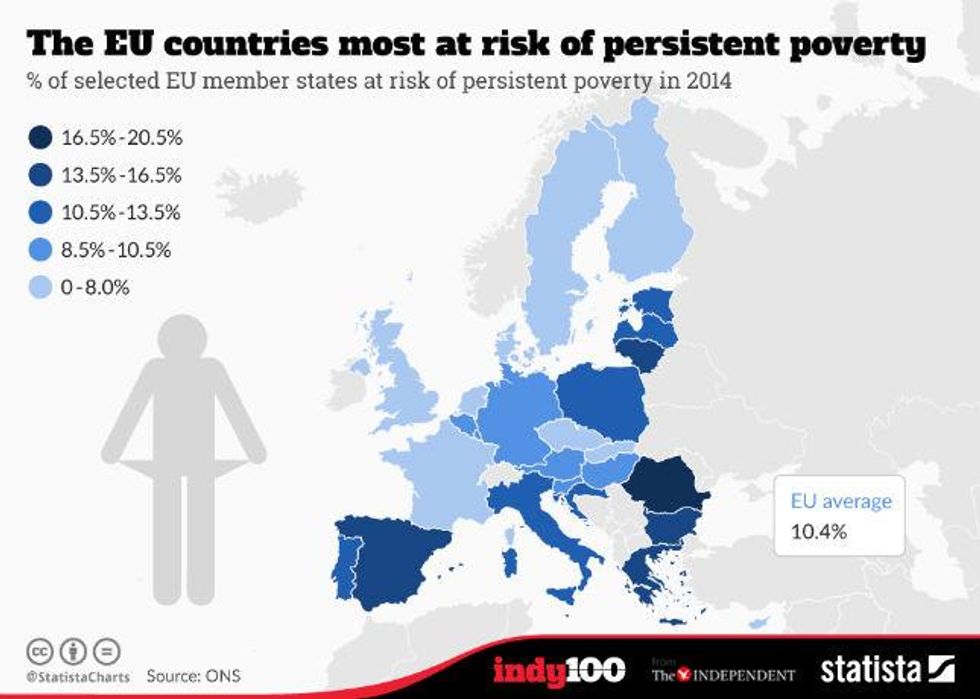News
Narjas Zatat
May 17, 2016

Picture:Jeff J Mitchell/Getty
Poverty levels in Europe have risen in the last five years and children are affected the most.
A Unicef report published last month heavily criticised the UK for the heightened levels of inequality among children when it comes to accessing health and education.
But how does the UK fare when it comes to poverty in comparison to the rest of Europe?
A recently published statistical analysis of the EU by the Office of National Statistics (ONS) found that 3.9 million Britons lived in persistent poverty in 2014.
According to ONS:
Persistent poverty is defined as being in relative income poverty both in the current year and at least two out of the three preceding years.
The following Statista map indicates levels of poverty around Europe:
Given that the EU average is 10.4 per cent, the UK appears to actually be in the 'safe' zone, with between zero and eight per cent risk of persistent poverty.
The countries in the danger zone, between 16.5 and 20.5 per cent risk are Lithuania, Romania and Spain.
More than half of children in Romania are at risk of poverty, and despite Spain's economic recovery (£), there continues to be a growing child poverty crisis.
Greece and Portugal, both suffering from economic crises, are highly at risk from persistent poverty, coming in between 13.5 and 16.5 per cent.
More: The countries where it's worst to grow up a girl
More: How the UK is failing miserably on child poverty - in two charts
Top 100
The Conversation (0)














